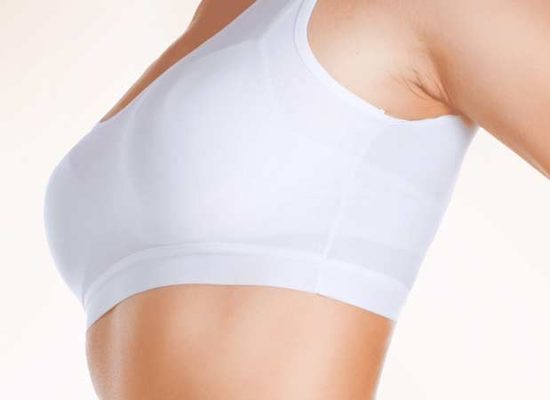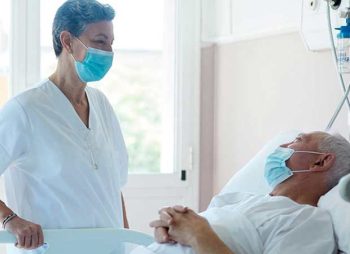A common problem in older adults with reduced mobility or in patients with long periods of rest is skin lesions. These are produced by pressure and friction of the support surfaces and are called bedsores or decubitus lesions or pressure ulcers.
Areas of the body around protruding bones tend to be more prone to bedsores than areas with more fat. In their task of healing bedsores at home, nurses observe that bedsores most often form in:
- Coccyx or buttocks
- Scapulae and spine
- Back of the arms and legs (where they rest in contact with the chair, for example)
- Back or sides of the head
- Shoulder blades
- Heels, ankles and skin behind the knees
People who are most at risk for bedsores have medical conditions that limit their ability to change positions or cause them to spend most of their time in a bed or chair.
Why do bedsores form?
Bedsores are caused by 3 main factors:
- By pressure: immobility causes constant pressure in an area of the body and prevents blood from circulating. The tissues do not receive oxygen and nutrients and can die in that area, causing the injury.
- Friction:skin contact with bedding or the patient, or with diapers, especially if the skin is moist, can cause this injury.
- By friction: rubbing against a surface, for example, when sliding on the bed or from the bed to the chair, the skin can be injured in vulnerable areas.
Bedsores can develop over the course of hours or days. Most lesions heal with treatment, but some never heal completely and require surgical treatments, PRP infiltration, or the use of special dressings.
Warning signs of bedsores
- Unusual changes in skin color or texture.
- Edema in a support area on bone.
- Drainage initially serohematic and, as the days go by, purulent in appearance.
- An area of skin that feels colder or warmer to the touch than other areas or with increased sensitivity.
- Pressure ulcers are differentiated by their depth, severity, and other characteristics.
- The degree of skin and tissue damage ranges from red, intact skin to a deep injury that affects muscles and bones.

Treatments
The treatment of bedsores depends on the depth of the affected tissue, and they are classified in levels from 1 to 4, with level 1 being that of the most superficial lesion.
A bedsore is unlikely to heal quickly. Even when there is home healing treatment, it can take several weeks, due to damage to the skin and other tissues.
Less severe pressure ulcers often heal within a few weeks with proper treatment, but serious wounds may need surgery.
In stages 1 and 2, when the epidermis and part of the dermis are affected, prolonged treatment is generally effective, and the bedsore heals. At levels 3 and 4, when deep dermis, muscle and even bone are already affected, the bedsores become infected and can be fatal. There is a treatment option with cleaning by surgery.
So, the importance of daily skin inspection is precisely to find the vulnerable areas reddened before the bedsore forms. If it has become formed, the call to the doctor and the start of treatment should not exceed 24 hours.
Home care services may involve more than one professional, such as a GP, plastic surgeon, nutritionist, physiotherapist or nurse. They will indicate what the treatment should be and what to expect from it. If the patient does not have a professional nurse 24 hours a day, which is the most frequent, the doctor will indicate the home service, one or more times a day. It will also give the necessary indications to the caregiver or family companion. Indications may vary, but generally include:
- Repositioning: avoid contact of the bedsore with the surfaces of the bed or chair.
- Use support surfaces, such as cushions, that help you sit or lie down in another way.
- Cleaning and drying of the wound, with indicated products.
- Bandage to create a barrier against infections. Bandages may have impregnated creams or medications.
- Removal of damaged or dead tissue.
- Medications to control pain.
- Medications to prevent or stop infections.
- Diet rich in protein.
- Surgery and graft if it’s a deep bedsore or if the previous treatment has failed.
There are other supportive therapies, such as the application of negative pressure, performed by a physiotherapist in the affected area, to remove damaged tissues and induce blood circulation. Also, hyperbaric pressure therapy or growth factors. They are optional treatments that are combined with the previous ones.
Preventive Measures
The first recommendations are the change of position frequently to avoid stress on the skin, the maintenance of good nutrition and fluid intake, the cessation of smoking and promote passive mobility at regular intervals of the bedridden patient.
Therefore you should change the weight support point frequently (1 time per hour), make the patient walk if possible, or use a special wheelchair (some wheelchairs may tilt, and this can relieve pressure), use cushions or a special pneumatic mattress to relieve pressure and ensure that the body is well positioned and adjust the elevation of the bed (if the bed can be raised in the head part, raise it no more than 30 degrees) to help prevent the patient from slipping.
Also consider the following skin care suggestions: keeping skin clean and dry with a gentle cleanser to limit skin exposure to moisture, urine, and feces; protect the skin with moisture barrier creams to protect the skin from urine and feces; change bedding and clothing frequently by paying attention to clothing buttons and wrinkles on sheets that can irritate the skin. Remember to check the skin daily by watching carefully for warning signs of a pressure sore.
































